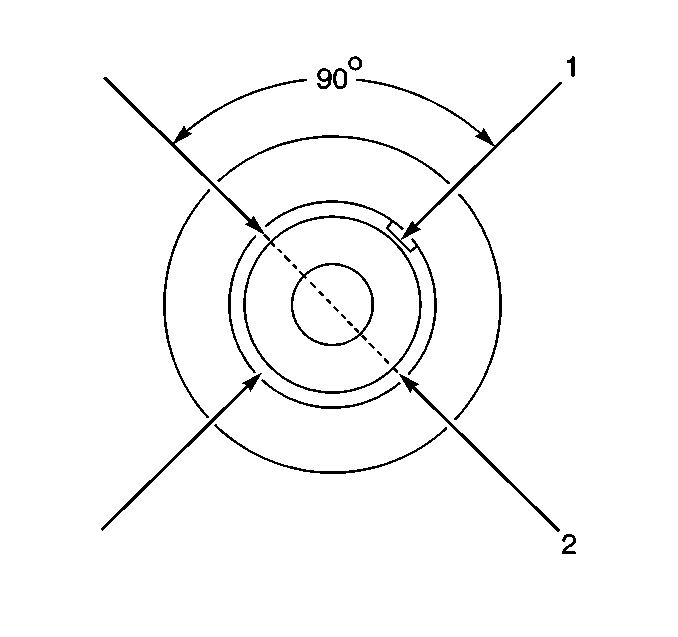For 1990-2009 cars only
Caution: To avoid serious personal injury, do not stand over tire when inflating. The bead may break when the bead snaps over the safety hump. Do not exceed 275 kPa (40 psi) pressure when inflating any tire if beads are not seated. If 275 kPa (40 psi) pressure will not seat the beads, deflate, relubricate the beads and reinflate. Overinflation may cause the bead to break and cause serious personal injury.
- Remove the wheel hub cap prior to mounting or dismounting a tire from a wheel. Use a tire changing machine to mount or dismount tires. Follow the equipment manufacturer's instructions. Do not use hand tools or tire irons to change a tire as they may cause the following damage:
- Clean the rim bead seats with a wire brush or a coarse steel wool to remove old rubber and light rust or corrosion. Clean and lubricate with an approved tire lubricant the bead area before mounting or dismounting a tire. Inflate the mounted tire to 275 kPa (40 psi) so that beads are completely seated.
- Position the tire and the wheel assembly on the changing machine so that the upper/lower bead breaker or other tire changing tools will not damage the wheel during the tire mounting or dismounting. Many tire changing machines have upper and lower bead breakers located 180 degrees apart that operate simultaneously. On such machines, locate the valve stem midway between the two bead breakers so that the wheel sensor is at least 90 degrees away from either breaker.
- Install the valve core and inflate to the pressure specified on the tire placard at the rear of the driver's door.
- Check the locating rings of the tire to be sure they show evenly around the rim flanges on both sides of the wheel.

| • | May damage the tire beads |
| • | May damage the wheel rim flanges |
Important: Do not lubricate the tire beads or wheel rims with lubrication containing silicone.

